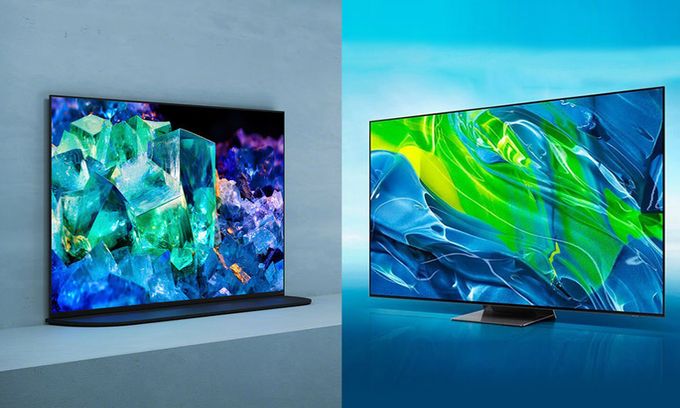Of course, mini LED backlight has become the main innovation of 2021. Samsung Neo QLED, TCL OD-Zero and LG QNED series successfully expanded the range of new LCD TVs with significantly improved contrast.
This year was no exception, and the hybrid QD-OLED panels from Samsung Display paved the way for developers to further evolve LCD TVs. Sony A95K and Samsung S95B became the first QD-OLED models, and their comparison is already quite relevant.
Both models provide:
– great contrast with perfect blacks;
-wide color gamut, rich colors and accurate color rendering due to quantum dot technology;
-extended panel life;
– excellent sound;
– high gaming performance;
– nearly ideal upscaling performance for 480p/720p/1080p inputs.
Additionally, Sony offers superb image processing, Google TV, Dolby Vision HDR and Auto Genre Picture mode for Playstation 5. Its only, but very significant drawback is the high price. Samsung offers superb value for money, 4x HDMI 2.1 ports and almost perfect pre-calibration ‘out of the box’.
Brightness and calibration
SDR brightness
– Sony – from 300 cd/m² (or nits) in peak 50% window to 410 nits in peak 10% window;
– Samsung – 320 nits in peak 50% window to 480 nits (peak 10% window).
HDR brightness
– Sony – from 270 nits (peak 50% window) to 980 nits (peak 10% window);
– Samsung – from 300 nits (peak 50% window) to 1,040 nits (peak 10% window).
But Sony offers ‘Dolby Vision Dark’ and brighter ‘Dolby Vision Bright’ modes. Depending on the content, the brightness difference between them can reach 30%. In this mode, side-by-side comparison of models shows almost identical brightness. But unlike Samsung, Sony offers better tone mapping without black crush and lost details. Therefore, it’s preferred for HDR content.
HDR brightness in game mode
– Sony – from 490 nits (peak 50% window) to 940 nits (peak 10% window);
– Samsung – from 590 nits (peak 50% window) to 1,020 nits (peak 10% window).
The Samsung is also brighter in this mode, but many scenes are too bright due to imperfect PQ EOTF (Perceptual Quantizer Electro-Optical Transfer Function) tracking. But setting ST.2084 to ‘-3’ greatly reduces this problem.
Pre Calibration (Sony vs Samsung)
– White Balance dE – 3.78 vs 1.75 (good value < 3);
– Color dE – 1.62 vs 1.00 (good value < 3);
– Gamma – 2.17 vs 2.13 (2.1-2.3);
– Color Temperature – 6,841K vs 6,505K (6500K is ideal).
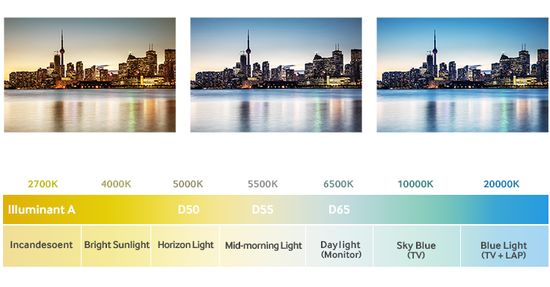
Post Calibration
– White Balance dE – 0.21 vs 0.26;
– Color dE – 1.62 vs 1.00;
– Gamma – 2.20 vs 2.19
Color Temperature – 6,511K vs 6,564K.
Samsung has superb accuracy in SDR ‘out of the box’. But calibration almost eliminates the difference. However, happy Samsung owners can safely ignore this step.
Gaming performance
Unlike Sony’s 2021 OLED models, the new A95K automatically supports VRR (Variable Refresh Rate). The technology’s algorithms reduce lag, judder and frame tearing, which is especially important for smooth and detailed gameplay. In fact, it continuously and smoothly changes the display refresh rate depending on the input signal.
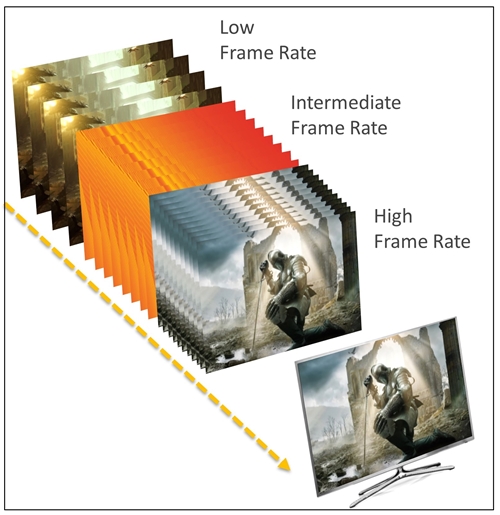
This technology was developed based on the HDMI 2.1 standard and provides the max video frame rate without tearing.
As known, the GPU requires different times to render depending on the scene, resolution and frame rate. Sometimes it does not have time to complete the process before the next frame arrives, which causes jitter and image tearing. VVR synchronizes these processes by displaying the previous frame.
Two 48Gbps HDMI 2.1 ports support 4K@120Hz, which is sufficient for next-gen PlayStation 5 and Xbox Series X consoles. Unfortunately, one of the HDMI 2.1 ports may be needed for eARC (Enhanced Audio Return Channel), limiting the ability to connect a second input device.
Specially designed for PS5 users, Auto Genre Picture mode is a significant bonus in favor of this model. ‘Auto HDR Tone mapping’ feature determines the TV type for PS5 to select the optimal HDR tone map.
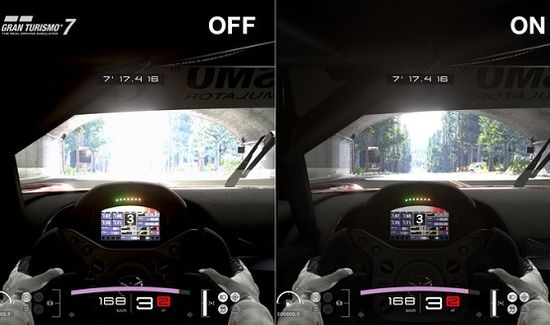
Of course, A95K has ALLM (Auto low latency mode). But HGIG (HDR Gaming Interest Group) is not supported.
The Samsung S95B looks no less impressive. It also supports a 120Hz refresh rate for next-gen PlayStation 5 and Xbox Series X consoles via HDMI 2.1. But it has 4x HDMI 2.1 ports for 4K@120Hz. Перечень других game features includes MBR (motion blur reduction), ALLM, Game Bar 2.0, Game motion plus, Super Ultra Wide Game View, Motion Xcelerator Turbo+, etc.
Key features
Samsung S95B has a 60W 2.2.2CH speaker with Dolby Atmos support. Of course, it supports popular Object Tracking Sound feature.

Depending on the location of the sound source image in the frame, this technology shifts it within the screen surface.
Sony uses a 2.2CH 60W system with Acoustic Surface Audio+ and Acoustic Center Sync feature for connecting to HT-A9 or HTA-7000 soundbar.
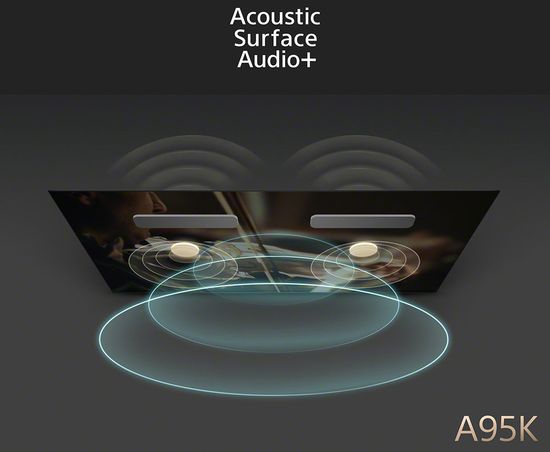
In general, the audio systems of both models correspond to the premium level.
Both models use a new feature called Depth Map (Sony) and Real Depth Enhancement (Samsung), simulating a 3D effect. In fact, it enhances clarity between foreground and background images.
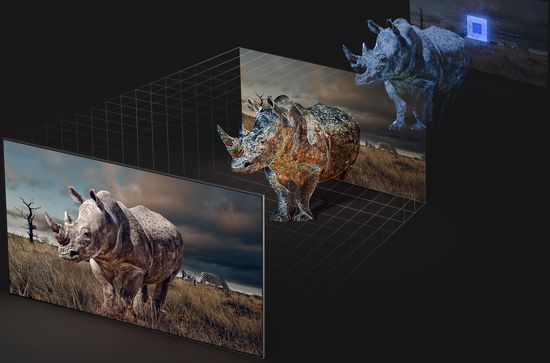
Sony uses last year’s great Cognitive Processor XR. However, the performance of Samsung’s Neural AI Quantum processor 4K is no less.
Their color gamut is also identical and reaches 100% DCI P3 and just under 87% Rec 2020. But Samsung has a slightly better color volume:
– 98% vs 94% DCI P3 coverage (1,000 nits);
– 52% vs 51% Rec 2020 coverage (10,000 nits).
Conclusions
In fact, image processing is their main difference. Traditionally, Sony focuses on color accuracy, while Samsung offers excellent peak brightness. Accordingly, the Sony A95K offers better tone mapping in HDR due to better detail, while the Samsung S95B supports brighter highlights in some scenes.
Dolby Vision support, Google TV and exclusive features for the Playstation 5 are also pros in favor of the Japanese giant. But the South Korean opponent’s model has 4x HDMI 2.1 ports, almost perfect pre-calibration ‘out of the box’, lower input lag and supports FreeSync.
The results of the evaluation for other aspects are quite close. Therefore, the price becomes a decisive factor, and it’s definitely in favor of Samsung. After a recent price cut, today the 65-inch Samsung model costs $ 2,100 vs $ 3,500 of the Sony A95K. Of course, prices change quite dynamically, but the $ 1,400 difference is very significant.
Curious, but new Samsung Neo QLED 4K models, including QN95B worth $ 2,500 for 65-inch model and QN90B priced at $ 1,800 for a similar size, are more formidable competitors for this fine TV. But to be fair, great LG OLED evo C2 and brighter G2 ($ 1,900 and $ 2,500 for 65-inch model) are no less formidable rivals.
And, of course, the list of competitors would be incomplete without great TCL C93K mini LED 4K (65-inch – € 1,900) and Hisense U8H QLED series Quantum mini LED 4K priced at only $ 1,500 for a 75-inch model.
This video introduces Auto HDR Tone mapping in Sony BRAVIA XR series for PlayStation 5.
